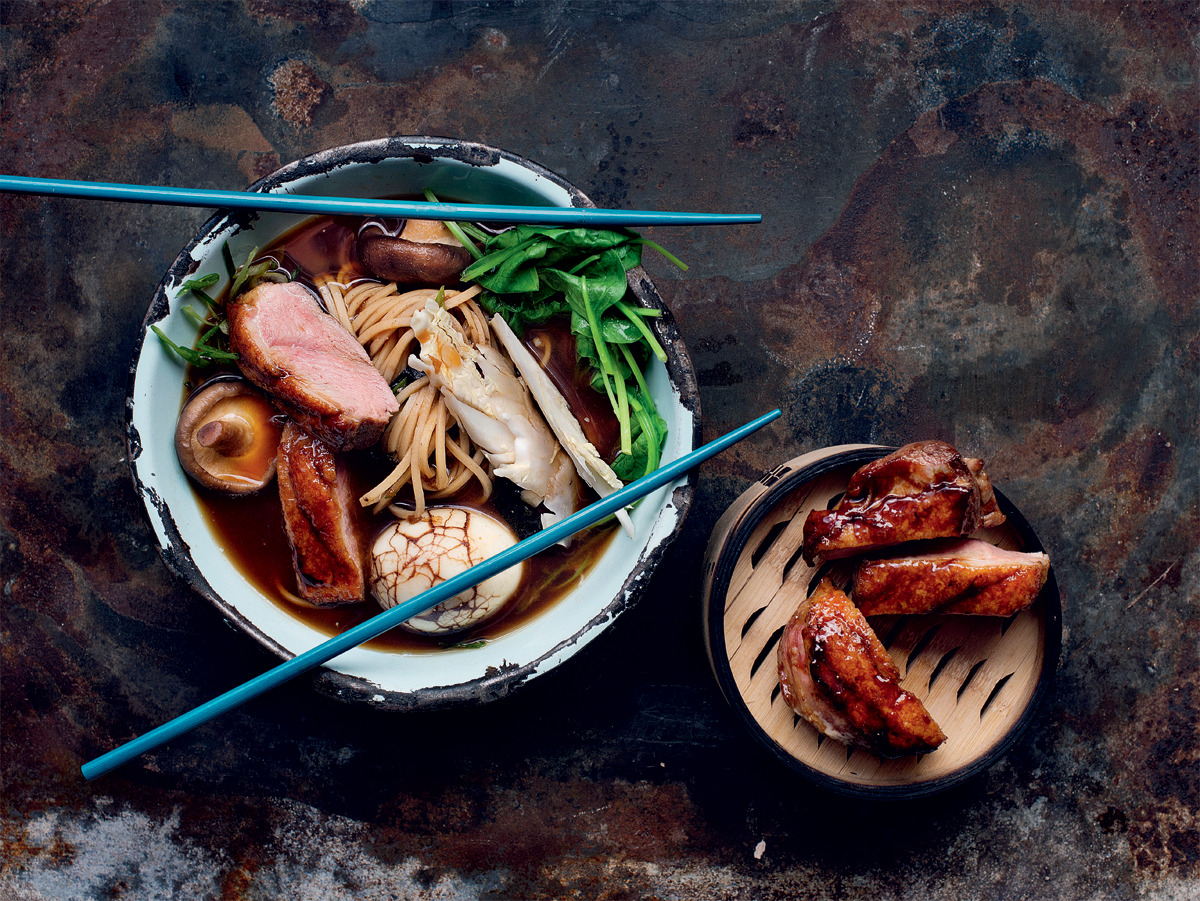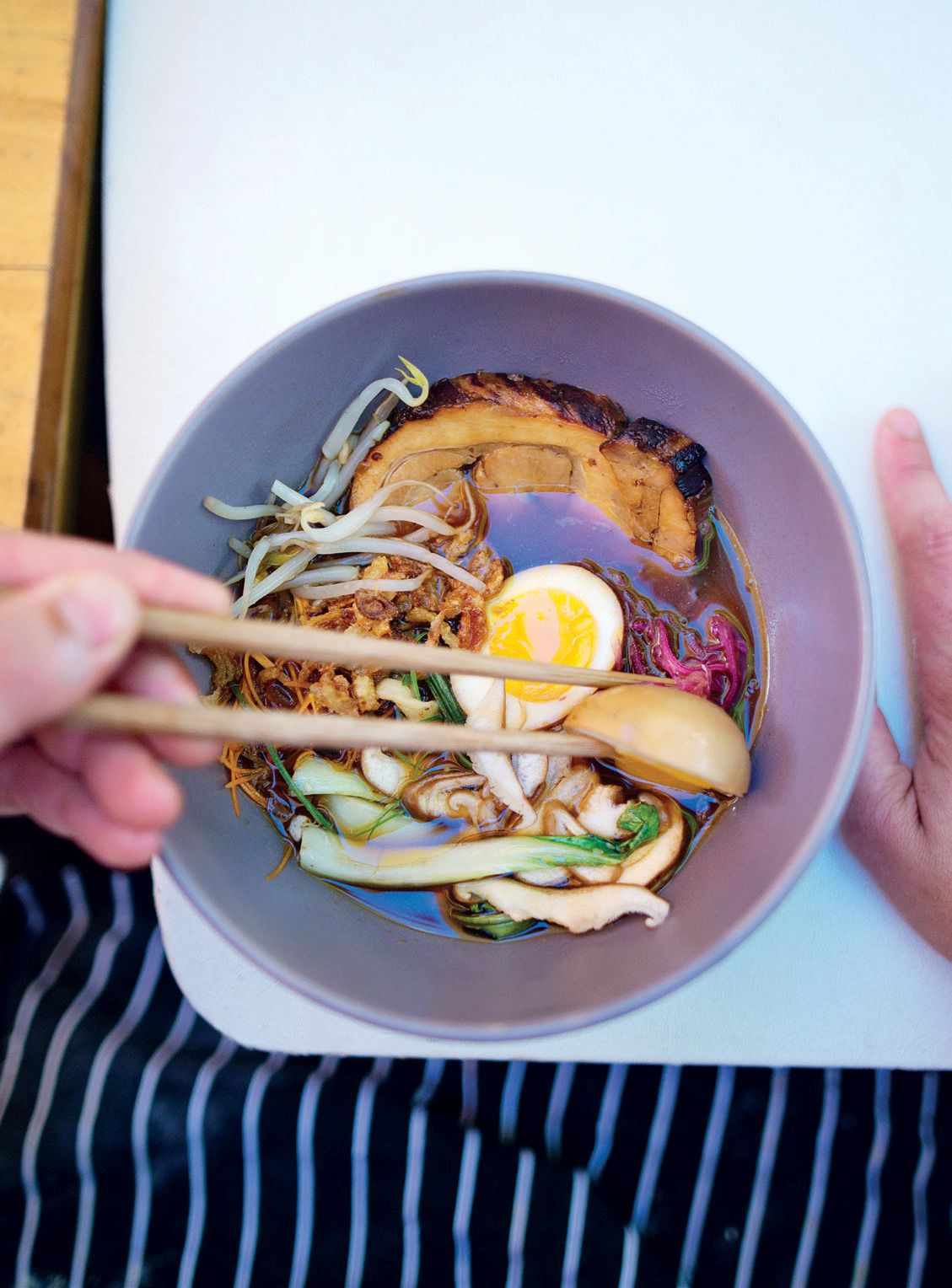Expert tips for making the best ramen at home
In the depths of winter, is there anything better than a deep bowl of steaming, slurpy ramen? If you want to try your hand at making your own, we’ve got some expert tips for you.
What is ramen?
The story behind ramen is a fascinating one. At first glance, ramen is a Japanese soup consisting of thin wheat-based noodles served in a broth, usually made from meat. It's often flavoured with soya or miso and topped with sliced roast pork, a boiled egg and nori. Though it's commonly accepted as Japanese, ramen itself is a dish that evolved from a Chinese noodle dish. It turns out the method of making the noodles themselves – a technique called kansui that refers to using bicarbonate of soda and water to give the noodles their characteristic chewiness – closely resembles the one used to make Chinese noodles. How the dish made its way from China to Japan is a hotly contensed issue. There are stories that claim a Chinese scholar, Shu Shunsui, fled Manchu rule in China and served as an advisor to feudal lord Tokugawa Mitsukuni, but this has been called into question as there's no evidence he ever did any cooking. A more reasonable theory is that Chinese immigrants were the reason for ramen's arrival in Japan, and the earliest versions of the dish – wheat noodles, served in broth and topped with Chinese-style roast pork – were seen around the 1860s.
Today, ramen takes on many forms, both in line with tradition and not. When using the term "ramen", it's important to remember that this refers to the noodles themselves. Styles can vary, but that generally relates to the broth itself. Tonkotsu tends to be the most popular, which features a broth made from pork bones. Other variants, which may or may not include the tonkotsu base, are shoyu (soya), shio (salt), miso (which is considered a more recent ramen addition and is uniquely Japanese), and kare (a curry-style ramen thought to have been brought to the country by British soldiers in the late 1800s). Toppings can vary from the ubiquitous roast pork, soya eggs, sliced spring onions, bean sprouts, pickled mushrooms, bamboo shoots and sesame seeds.
What are the basics of a good ramen recipe?
To answer this, we enlisted the help of Cristina Sato, owner of Yamato restaurant in Johannesburg. "My recipe is very simple, it contains pork and chicken bones, garlic, salt and soya or miso paste for seasoning," says Cristina. "These are my non-negotiables when making ramen." Another tip Cristina has is to take your time making the broth. "The common mistake I see when people make ramen is that they don't cook the broth long enough, you really need to spend a long time to make a proper broth." How long is long? Head chef of Tjing Tjing and Momiji in Cape Town, Christi Semczyszyn, told us: "Minimum 8 hours. This emulsifies the fat into the broth and makes it cloudy, sticky and very rich." She stresses the importance of this step: "The broth is the most important part for me, otherwise, it’s just noodle soup. Long, slow cook, and the right flavours, and you can top with just about anything." Along with patience, Christi also said, "I use the good collagen-rich, fatty parts like pork trotters or tails, chicken wing tips or feet, and add aromatics such as ginger, garlic, konbu and dried shiitake mushrooms."
Can you make a good vegetarian ramen?
Though ramens tend to be meat-heavy, they don't necessarily have to be. For vegetarians wanting to make their own ramen, Cristina suggests using lots of different vegetables, including "mixed mushrooms and tomatoes to help build flavour". Christi's advice is to char the onions and ginger first, to give the broth a deeper flavour. "If you add a variety of the umami-rich ingredients (such as konbu, shiitake mushrooms, soya sauce, miso, roast tomatoes) you can get a ton of flavour out of a veg broth," she adds.
Now for the fun part, what are the best toppings for ramen?
Tjing Tjing's Christi keeps her toppings pretty classic: "Slow-cooked char siu pork belly (I keep the skin on. When it's cooked for long, it goes super soft and sticky – it's the best part)," she says. " And always a soft-boiled soya-marinated egg, spring onion and furikake (a condiment made from salt, sugar, toasted sesame seeds and nori)." While Cristina is also a fan of pork belly, she adds that "very rare beef fillet with fried garlic chips and stir-fried mixed vegetables and mushrooms" are also some of her favourite toppings.
A note about the noodles
While modern convenience has made ready-made dried noodles easily accessible, both Cristina and Christi believe that fresh noodles are the way to go. Especially if you've gone to the effort of making your own broth, don't falter at the last hurdle and use dried noodles. "You have to use home-made egg noodles," says Cristina simply, "Not from the packet!" Christi agrees, "It’s not the same with packaged egg noodles. A little extra effort to make the alkaline noodles yourself makes a huge difference."
If after all this making your own ramen sounds like a chore, Christi has one last nugget of wisdom. "It’s a mission to make all the components yourself at home, separately, but they all freeze pretty well," she says. "I make a huge batch of broth, belly and noodles when I’m feeling productive, and freeze the portions individually for when I have a ramen craving." Failing that, leave it to the professionals and visit Yamato in Joburg or Tjing Tjing in Cape Town for a delicious bowl of ramen.
Find some of our favourite ramen-inspired recipes here:
 Get the recipe for duck ramen with tea-stained eggs
Get the recipe for duck ramen with tea-stained eggs

 Get the recipe for chilli beef ramen here.
Get the recipe for chilli beef ramen here. Get the recipe for The Test Kitchen's pork ramen here.
Get the recipe for The Test Kitchen's pork ramen here.
Comments